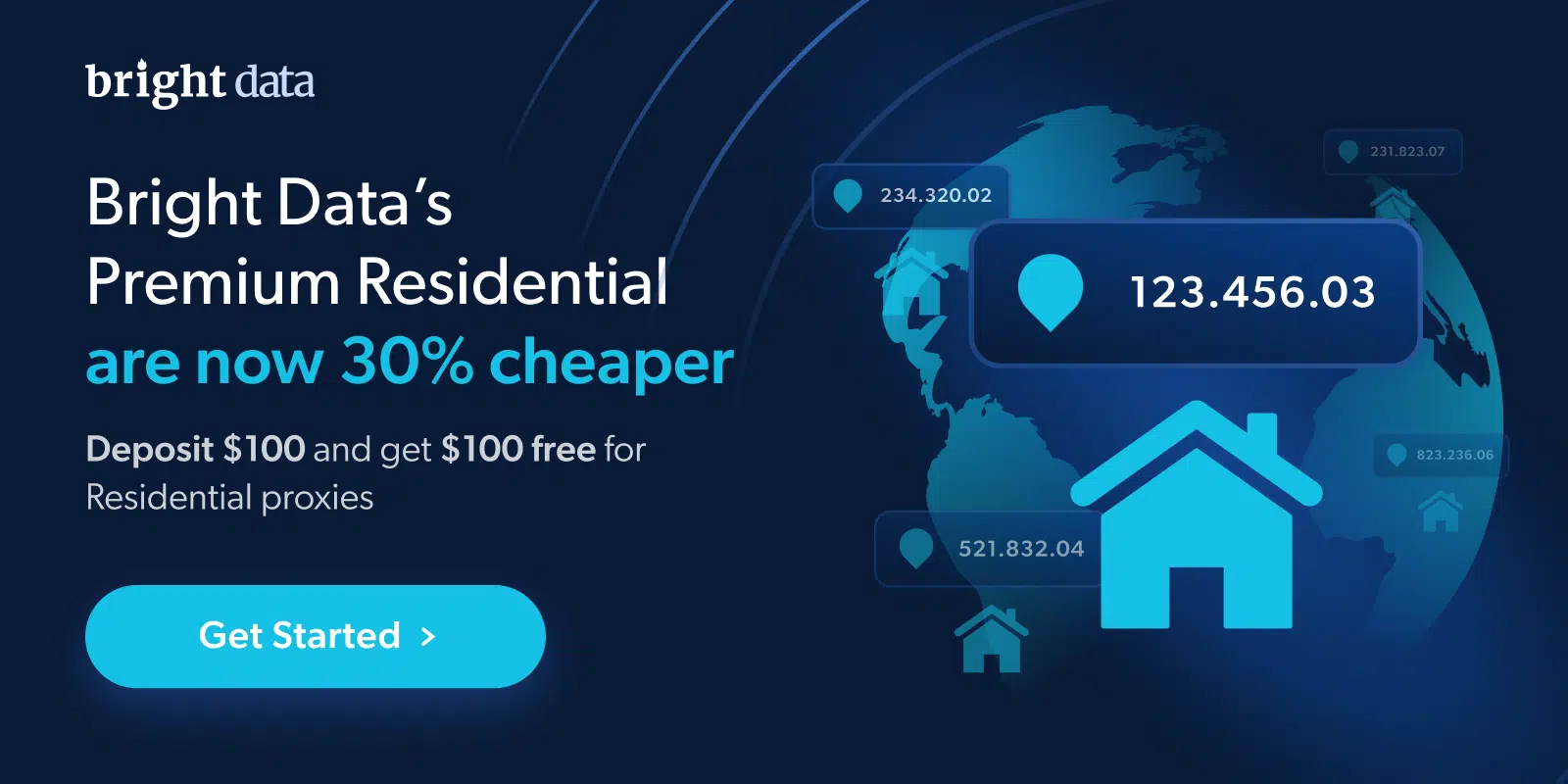Hi there! If you want to learn how to leverage Python for web scraping, you‘ve come to the right place. This comprehensive guide will teach you everything you need to extract data from websites.
Let‘s get started!
Why Use Python for Web Scraping?
Python is one of the most popular languages used for web scraping due to its many advantages:
Simplicity – According to programmers, Python has an easy-to-read syntax and is more intuitive than languages like Java. This makes it easy for beginners to write and understand web scraping code.
Available Libraries – Python has a vast collection of libraries specifically designed for web scraping. Some popular ones include BeautifulSoup, Scrapy, Selenium, and many more. We‘ll explore some of these in detail later.
Speed – For most web scraping tasks, Python provides excellent performance. Libraries like Asyncio allow you to scrape data asynchronously to improve speed.
Versatility – Python can handle simple static websites as well as complex dynamic pages requiring JavaScript rendering. You can run scrapers locally or deploy them to the cloud.
Data Handling – Once scraped, data needs to be stored and analyzed. Python makes it easy to export data to JSON, CSV, Excel, databases, and more.
Community – According to Reddit, Python has one of the largest developer communities. There‘s always help available for web scraping challenges!
Overview of the Web Scraping Process
When building a web scraper, you typically follow these key steps:
-
Send Requests – Use a Python HTTP client to send requests to the target webpage and fetch the HTML.
-
Parse HTML – Use a parser like BeautifulSoup to analyze the HTML and extract relevant data.
-
Store Data – Write the extracted data to a file format like JSON or save it to a database.
-
Clean Data – Transform, normalize, and clean the scraped data as needed for analysis.
-
Analyze/Visualize – If required, analyze and visualize the data using libraries like Pandas, Matplotlib etc.
Now let‘s dig into some Python libraries that will help with each stage of this process.
Sending Requests with HTTP Clients
To scrape a webpage, we first need to download its HTML content using an HTTP request. Let‘s explore some HTTP client libraries.
Requests
Requests is the most popular Python library used for sending HTTP requests. According to GitHub, it has over 65,000 stars and is well-maintained.
Here‘s how you‘d use Requests to send a GET request:
import requests
response = requests.get(‘https://www.example.com‘)
print(response.status_code)
print(response.text)Some key features of Requests:
- Supports methods like GET, POST, PUT, DELETE
- Automatic encoding/decoding of request/response data
- Built-in connection pooling and session support
- Handling of cookies, timeouts, retries, redirects
- Works seamlessly with HTTP authentication and proxies
Overall, Requests makes it very easy to send requests and get started with web scraping!
HTTPX
HTTPX is a next-generation HTTP client for Python. It uses HTTP/1.1 and HTTP/2 and provides both async and sync APIs.
Here‘s how you could use HTTPX to send a GET request:
import httpx
with httpx.Client() as client:
response = client.get(‘https://www.example.com‘)
print(response.text) Why consider HTTPX?
- Supports modern HTTP standards like HTTP/2
- Provides sync and async request interfaces
- Easy timeout, retry and keepalive configuration
- Enables streaming of response content
- Fully typed and well-documented
So HTTPX is great if you need more control and modern features compared to Requests.
Parsing HTML and Extracting Data
Once you‘ve downloaded the HTML, you need to parse it and extract the data you want. Let‘s look at some useful Python libraries for parsing.
BeautifulSoup
Beautiful Soup is the leading Python library used for parsing HTML and XML documents. It lets you analyze parse trees of pages easily.
Here‘s how you can use BeautifulSoup to extract the page title:
from bs4 import BeautifulSoup
soup = BeautifulSoup(response.text, ‘html.parser‘)
page_title = soup.select_one(‘title‘).textSome stellar features of BeautifulSoup:
- Supports parsing broken HTML
- Lets you search, navigate, and modify parse trees
- CSS selector and Project Query support for parsing
- Built-in methods for common tasks
- Can handle encoding conversions
- Integrates well with popular scraping libs like Scrapy
Overall, BeautifulSoup makes HTML parsing a breeze!
lxml
According to web developers, lxml is an extremely fast and efficient parsing library for HTML and XML in Python.
Here‘s how you can use lxml to extract links from a page:
from lxml import html
root = html.fromstring(response.text)
links = root.cssselect(‘a‘)Key benefits of using lxml:
- Very fast thanks to C libraries it builds on
- Supports XPath, CSS selectors, and XSLT
- Great for working with large XML/HTML docs
- Creates lightweight trees to parse documents
- Integrates well with Scrapy, BeautifulSoup etc.
So consider lxml when speed and performance are critical.
pyquery
For a lightweight HTML parser, check out pyquery. It allows a jQuery-like syntax to query elements.
Here‘s how you can extract links using pyquery:
from pyquery import PyQuery as pq
doc = pq(response.text)
links = doc(‘a‘) Some handy features of pyquery:
- jQuery-like syntax for element selection
- Supports CSS selectors for parsing
- Methods for DOM traversal and manipulation
- Small and simple API
pyquery is great for basic day-to-day parsing and extraction tasks.
Reading and Writing Scraped Data
Once you‘ve scraped data, you‘ll need to store it somewhere. Let‘s review some useful Python libraries for reading and writing data.
JSON
JSON is a common format used by web APIs. In Python, we can use the json module to parse JSON responses and encode data as JSON strings.
For example:
import json
data = {‘name‘: ‘John‘, ‘age‘: 28}
json_data = json.dumps(data)
# ‘{"name": "John", "age": 28}‘
json_data = ‘{"name": "Mary", "age": 32}‘
parsed_data = json.loads(json_data)
# {‘name‘: ‘Mary‘, ‘age‘: 32}As you can see, it‘s quite straightforward!
CSV
For tabular data, CSV (comma separated values) is a quick and convenient format. We can leverage Python‘s csv module to read and write CSV files.
Here‘s an example:
import csv
with open(‘data.csv‘, ‘w‘) as file:
writer = csv.writer(file)
writer.writerow([‘Name‘, ‘Age‘])
writer.writerow([‘John‘, 28])
writer.writerow([‘Mary‘, 32])
with open(‘data.csv‘, ‘r‘) as file:
reader = csv.reader(file)
for row in reader:
print(row) So CSVs are great for basic scraping tasks involving tables of data.
Pandas
Pandas is a very popular Python data analysis library. It can also handle reading and writing data in formats like JSON, CSV, Excel, and more.
For example:
import pandas as pd
df = pd.read_json(‘data.json‘)
df.to_csv(‘data.csv‘)
df.to_excel(‘data.xlsx‘)Pandas makes it easy to clean, analyze, and output your scraped data for further usage.
SQLite
For serverless data storage, SQLite is a great relational database option. We can use the sqlite3 module to access SQLite databases from Python.
Here‘s an example to create a database table and insert some scraped data:
import sqlite3
conn = sqlite3.connect(‘database.db‘)
c = conn.cursor()
c.execute(‘‘‘
CREATE TABLE data (name text, age integer)
‘‘‘)
c.execute("INSERT INTO data VALUES (‘John‘, 28)")
conn.commit()
conn.close()SQLite works nicely for small to medium sized web scraping projects.
Scraping JavaScript-Heavy Sites
Modern websites rely heavily on JavaScript to render content dynamically. To scrape these sites, we need browsers like Selenium and Playwright.
Selenium
Selenium directly controls browsers like Chrome and Firefox using the WebDriver API. This allows it to execute JavaScript code and render full pages.
Here‘s how to extract the page title using Selenium:
from selenium import webdriver
driver = webdriver.Chrome()
driver.get(‘https://www.example.com‘)
title = driver.find_element_by_css_selector(‘h1‘).text
driver.quit()Some notable features of Selenium:
- Supports browsers like Chrome, Firefox, Safari
- Can automate form submissions and clicks
- Executes JavaScript in the browser
- Runs headless without requiring a GUI
Overall, Selenium is ideal to scrape content loaded by JavaScript.
Playwright
Playwright is a new browser automation library from Microsoft. It emulates user actions and gathers data from dynamic webpages.
Here‘s how you can extract the page title with Playwright:
from playwright.sync_api import sync_playwright
with sync_playwright() as p:
browser = p.chromium.launch()
page = browser.new_page()
page.goto(‘https://www.example.com‘)
print(page.title())
browser.close()Why Playwright?
- Headless browser automation
- Mobile device emulation
- Auto-wait functionality
- Network traffic interception
- Fast performance
- Active development community
So Playwright is a very capable Selenium alternative for dynamic scraping.
Crawling Entire Sites with Scrapy
While the tools we‘ve looked at are great for one-off scrapers, Scrapy is a dedicated web crawling framework for large projects.
Scrapy lets you write spiders that recursively crawl across domains and manage pagination, duplicates, etc automatically.
Here‘s a simple Scrapy spider:
import scrapy
class ExampleSpider(scrapy.Spider):
name = ‘example‘
def start_requests(self):
url = ‘https://www.example.com‘
yield scrapy.Request(url, callback=self.parse)
def parse(self, response):
for h2 in response.css(‘h2‘):
yield {‘title‘: h2.css(‘::text‘).get()}
for link in response.css(‘a::attr(href)‘):
yield response.follow(link, callback=self.parse)Notable features of Scrapy:
- Define crawling rules to parse pages recursively
- Extract data using CSS/XPath and custom middleware
- Follow Sitemaps, pagination patterns automatically
- Scrape concurrently at scale
- Export scraped data to any required format
So Scrapy is perfect for large structured web scraping projects.
Deploying and Scheduling Python Scrapers
Instead of just running scrapers locally, we can deploy them to the cloud and add scheduling for reliability.
Apify
Apify lets you deploy Python scrapers as Docker containers called Actors. You can run and manage these Actors in the Apify cloud.
Here‘s an example using the Apify API:
from apify_client import ApifyClient
client = ApifyClient(‘MY_API_TOKEN‘)
run = client.actor(‘john/web-scraper‘).call()
print(client.dataset(‘default‘).items) Some useful Apify features:
- Deploy scrapers as Docker containers
- Schedule recurring scrape jobs
- Scale using proxies and headless browsers
- Manage datasets and crawl history
- Monitor resource usage and errors
- Visual dashboard to control scrapers
So Apify is ideal for running Python scrapers smoothly in the cloud.
Scrapy Cloud
Scrapy Cloud makes it easy to run Scrapy spiders in the cloud without configuring servers and containers.
You deploy spiders, then Scrapy Cloud handles scaling, storage, scheduling etc.
from scrapy import signals
from scrapy.exporters import CsvItemExporter
class CSVPipeline(object):
def spider_opened(self, spider):
self.file = open(‘data.csv‘, ‘wb‘)
self.exporter = CsvItemExporter(self.file)
self.exporter.start_exporting()
def spider_closed(self, spider):
self.exporter.finish_exporting()
self.file.close()
def process_item(self, item, spider):
self.exporter.export_item(item)
return itemWhy Scrapy Cloud?
- Quickly run Scrapy spiders without servers
- Auto-scale spider runs to handle traffic spikes
- Schedule spiders and integrate storage
- Real-time log monitoring and alerts
- Easy visual dashboard to control all spiders
So if you love Scrapy, Scrapy Cloud makes deployment simple.
Tips for Effective Web Scraping
Here are some key tips to ensure your scrapers work well:
-
Always inspect pages using Developer Tools before writing scrapers. This allows you to identity IDs, classes, etc to extract data.
-
Use incognito or private browser mode when testing scrapers to avoid caching issues.
-
Review robots.txt of sites to identify sections you can‘t scrape legally.
-
Initially write scrapers to extract small pieces of data. Then expand to full-page scraping.
-
Use proxies, random delays, and headers to mimic humans and avoid blocks.
-
Limit request rates to avoid overwhelming servers and getting blacklisted.
-
For ecommerce sites, persist cookies/sessions to maintain cart data across requests.
-
Follow ethical practices like not overloading sites, extracting public data only, caching content locally when possible.
Final Thoughts
As you‘ve seen, Python is incredibly versatile for web scraping – from simple personal projects to complex commercial systems.
The key is choosing the right libraries and tools for your needs. Mastering libraries like Requests, BeautifulSoup, Selenium, and Scrapy will enable you to reliably extract data from almost any website.
For further learning, browse the documentation for each library and build some practice projects. Feel free to reach out if you have any other questions!
Happy Python web scraping!

